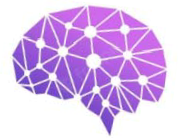
qEEG screening
Service code s9012
Short description
Depression is a disorder of the representation and regulation of emotions and mood.
Emotions are conscious feeling states. Mood – is the prevailing emotional state. Depression is a disabling disorder characterized by negative moods, lack of interest in pleasurable activities, weight change, sleep disturbance, psychomotor retardation, fatigue, feelings of worthlessness, decreased attention, and suicidal ideation.
According to scientific research, just thinking about a sad event can mimic the previously established pattern of cortical electrical activity in depressed people. Thus, people who constantly ruminate on emotionally negative events may “learn” to become depressed as it gradually becomes the new baseline brain activity.
Here, qEEG screening may help to objectively assess whether the brain’s electrical activity is typical for depression.
A recent review prepared for the American Psychiatric Electrophysiological Association summarized evidence for the clinical utility of qEEG in diagnosing depression and in delineating the underlying aetiology(1).
Using multivariate qEEG techniques the accurate separation of depressed from healthy individuals has been demonstrated repeatedly and replicated in large samples with 72-93% sensitivity and 75-88% specificity(2,3,7).
Scientific research(4,5,6) demonstrated that qEEG screening can differentiate primary depressives from alcoholics, primary dementias and normals with an overall accuracy of 76% (~25% expected by chance). Primary and secondary major depressives are correctly classified with 77% accuracy. Unipolar depressives are discriminated from bipolar depressives with 88% accuracy. Depressed patients are discriminated from schizophrenia with 85% accuracy.
Results
By performing this qEEG screening you will get the information on:
- whether you have a qEEG pattern typical for depression,
- what is a risk of developing depression in the future,
- your affective style (affective style reflects emotional-motivational tendency that predisposes an individual to engage in certain types of emotional [positive versus negative] and motivational [approach versus withdrawal] responses).
Notes:
- The results of qEEG analysis are put in context of published scientific studies, the individual’s health history, complaints, symptoms and psychometric and other evaluations (if available).
- Present psychotropic medication use may affect the results.
To place a service order, use the following email:
References
- Hughes JR, John ER: Conventional and quantitative electroencephalography in psychiatry. J Neuropsychiatry Clin Neurosci 1999; 11: 190–208.
- Prichep LS, John ER: Neurometrics: Clinical applications, in Clinical Applications of Computer Analysis of EEG and Other Neurophysiological Variables v 2. Handbook of Electroencephalography and Clinical Neurophysiology, edited by Lopes da Silva FH, van Leeuwen WS, Remond A. Amsterdam, Elsevier, 1986, pp 153-170.
- John E, Prichep L, Almas M: Toward a quantitative electrophysiological classification system in psychiatry, in Biological Psychiatry, edited by Racaga G, Brunello N, Fukuda T. New York, Excerpta Medica 1991, pp 401-406.
- Lieber AL, Prichep LS. Diagnosis and subtyping of depressive disorders by quantitative electroencephalography: I. Discriminant analysis of selected variables in untreated depressives. Hillside J Clin Psychiatry 1988; 10(1): 71-83.
- John E, Prichep L, Friedman J, et al: Neurometrics: Computer assisted differential diagnosis of brain dysfunctions. Science 1988; 293: 162-169.
- Bresnahan SM, Barry RJ. Specificity of quantitative EEG analysis in adults with attention deficit hyperactivity disorder. Psychiatry Res 2002; 112: 133-144.